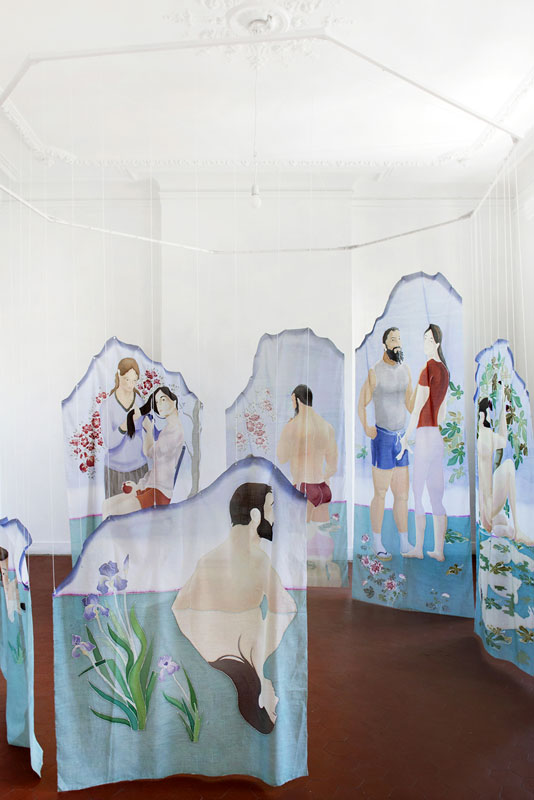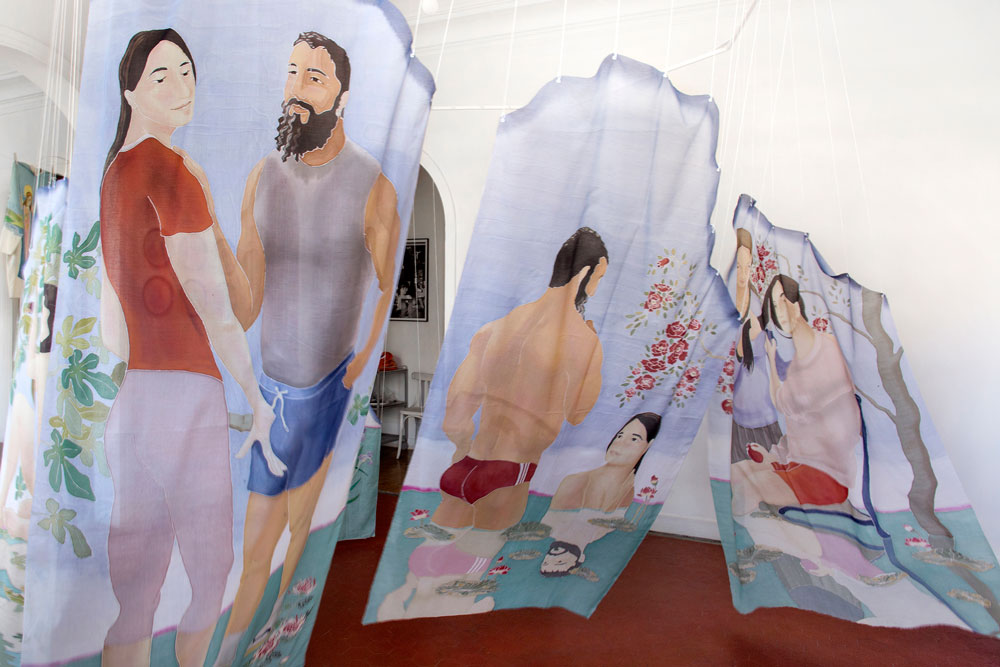Les Mythomanes
Salon du Salon Gallery, Marseille, 2020, RDV Gallery, Nantes, 2019.
Silk painting.
The veracity of the myth of Dionysus and Prosymnus is debated among experts. The earliest trace of it is found in the fourth century AD in the Exhortation to the Greeks by Clement of Alexandria. The Roman Empire, then Christianised, transferred the persecutions to the pagans, whose myth serves Clement of Alexandria's feelings about their morals, which he considers depraved.Since my adolescence, I have been holding a serious publishing work that claims to be as complete as possible on mythology. I find, however, in the margins of the pages additions that I have scribbled down as I discovered them. On rereading them, my notes mention only homosexual love affairs.
I decided to interpret this myth (which has no artistic representation) through a series of paintings on cotton, suspended in a mobile with a set of moving threads, which turn on themselves, and which one can cross.This myth, which I describe briefly below, allows me to reflect on the power of desire against death. These reflections manifested themselves in the 2000s through my encounters at the cruising area of the Apigné ponds in the middle of the forest, near Rennes. There I found older lovers who had survived the Aids epidemic of the 1980s and 1990s, and whose stories of the death toll around them were passed on to me. Some of my lovers have since died.
This installation was first exhibited in 2019 at the RDV gallery in Nantes, by the invitation of Alexandre Meyrat-Le-Coz. They were hanging on his plant-like ceramic sculptures.









In figure 1, a Dionysus with the feminine features of my youth meets a Prosymnus with my current features. In the myth Dionysus wishes to find his mother in the underworld. To do so, he must ask the wise Prosymnus for directions. The latter agrees to do so on one condition, to obtain his sexual favours. Dionysus consents, but only after his return from the underworld.
In figure 2, Prosymnus leads him to dive to the bottom of a lake in the Argolis, where the gate to the underworld is located.
In figure 3, Dionysus finds his mother on the other side of the lake, in the underworld.
In figure 5, Dionysus wishes to leave the underworld with his mother.
In figure 6, Dionysus returns to the world of the living. Faced with his mother's impossible return, he abandons what turns out to be the image of his mother, that stood between them. Dionysus has mourned.
In figure 8, Dionysus wishes to find the old sage to fulfil his promise but Prosymnus has since died. Dionysus wants to honour his pact. To do so, he finds a branch of a fig tree in the shape of a phallus, plants it on the tomb of Prosymnus, and impales himself with it.
